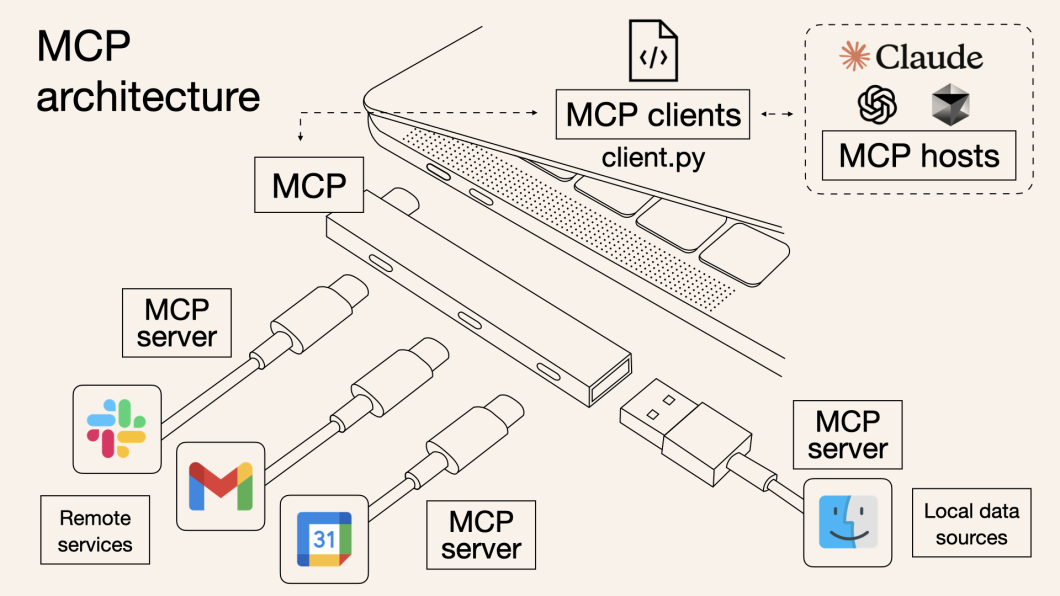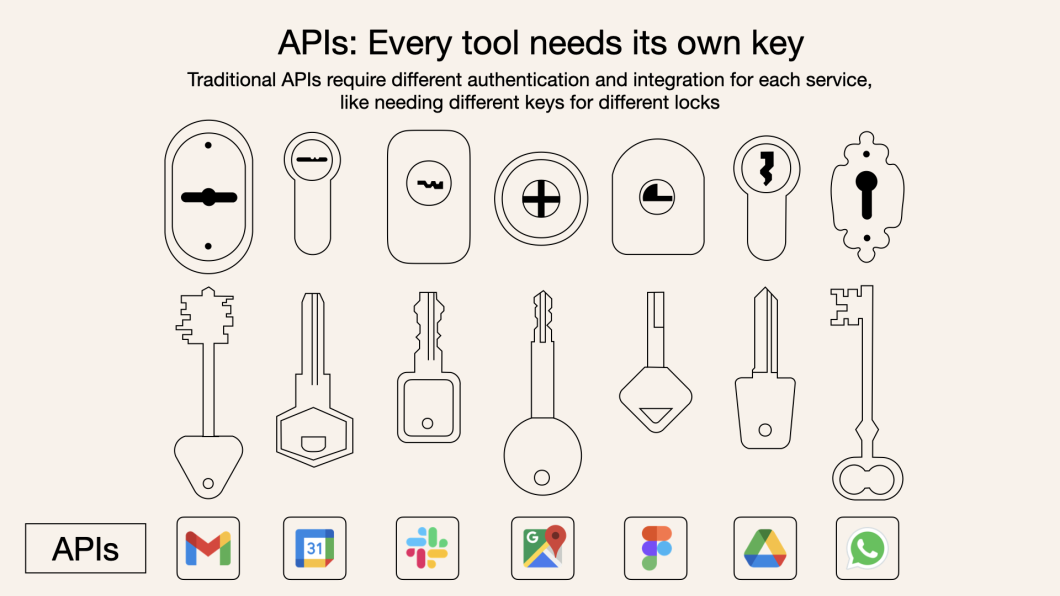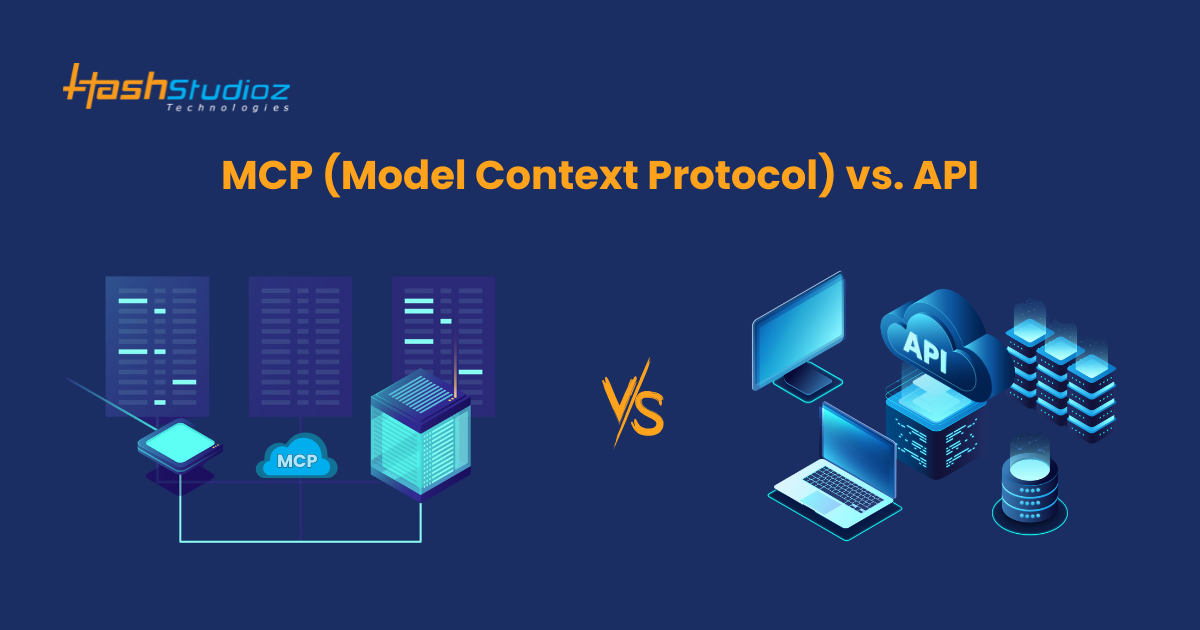In the evolving landscape of software development, two paradigms have emerged to facilitate communication between applications and external systems: the Model Context Protocol (MCP) and Application Programming Interfaces (APIs). While both serve as bridges for data exchange, they cater to different needs and operate on distinct principles. This MCP vs API comparison highlights how each approach fits into modern software architecture. APIs are widely adopted, with over 90% of developers using them in some form, and the global API management market is projected to reach $13.7 billion by 2030. MCP, though newer, is gaining traction with the rise of AI-based systems, where maintaining context across interactions is critical.
As large language model (LLM) integration grows expected to impact 80% of enterprise software tools by 2026 understanding the difference between APIs and MCP becomes essential for developers, architects, and organizations aiming to build efficient, scalable, and context-aware systems.
Table of Contents
- Understanding MCP (Model Context Protocol)
- Understanding APIs (Application Programming Interfaces)
- Why Traditional APIs Are Like Having Separate Keys for Every Door
- Technical Comparison: MCP vs. API
- Use Case Scenarios
- Benefits and Limitations
- MCP and API in Modern Tech Ecosystems
- Limitations and Challenges
- The Future of MCP and APIs
- Make Smarter Integration Choices with HashStudioz: Your Partner in Scalable Digital Solutions
- Conclusion
- Frequently Asked Questions (FAQs)
Understanding MCP (Model Context Protocol)
The Model Context Protocol (MCP) is an open-source framework introduced by Anthropic in November 2024. It standardizes the way artificial intelligence (AI) models, particularly large language models (LLMs), integrate and share data with external tools, systems, and data sources. MCP aims to address the complexities associated with integrating LLMs into diverse software environments by providing a universal interface for context exchange .
How MCP Works
MCP operates by enabling AI models to interact with external systems through a standardized protocol. This interaction allows models to access and manipulate data from various sources, such as databases, APIs, and local files, in a context-aware manner. The protocol defines specifications for data ingestion, transformation, and contextual metadata tagging, ensuring seamless integration across different platforms .
MCP uses a straightforward client-server architecture that allows AI systems to interact with tools and data efficiently.

- MCP Hosts: These are applications such as AI-powered IDEs or assistants (e.g., Claude Desktop) that request access to external tools or data.
- MCP Clients: They establish and maintain dedicated one-to-one connections with MCP servers. Each connection is tailored to a specific tool or service.
- MCP Servers: These lightweight servers expose selected features through MCP. They connect to both local and remote systems to serve data or perform actions.
- Local Data Sources: These can be files, internal databases, or services that the MCP server accesses securely on the user’s machine or network.
- Remote Services: These are cloud-based APIs or tools that MCP servers connect to on behalf of the host application.
Think of MCP as a bridge: it doesn’t execute complex logic by itself. Instead, it ensures the smooth flow of context, data, and instructions between AI models and the tools or sources they rely on.
Real-World Applications of MCP
- AI Assistants: Enhancing the capabilities of virtual assistants by enabling them to access and process data from multiple sources in real time.
- Enterprise Automation: Streamlining business processes by allowing AI models to interact with enterprise resource planning (ERP) systems, customer relationship management (CRM) tools, and other internal applications.
- Data Retrieval: Facilitating natural language queries to retrieve information from structured and unstructured data sources .
Understanding APIs (Application Programming Interfaces)
An Application Programming Interface (API) is a set of rules and protocols that allow one software application to interact with another. APIs are used to enable the integration of different systems, allowing them to communicate and share data. Common use cases include:
- Social Media Integration: Allowing applications to post content or retrieve user data from platforms like Facebook or Twitter.
- Payment Processing: Enabling applications to process transactions through services like PayPal or Stripe.
- Weather Data: Fetching real-time weather information from services like OpenWeatherMap .
Types of APIs
- REST (Representational State Transfer): A stateless architecture that uses standard HTTP methods and is widely used for web services.
- SOAP (Simple Object Access Protocol): A protocol that defines a set of rules for structuring messages and relies on XML for message format.
- GraphQL: A query language for APIs that allows clients to request only the data they need.
API Architecture and Workflow
APIs typically follow a client-server model where:
- Client: Sends requests to the server.
- Server: Processes the requests and returns the appropriate responses.
This interaction is often facilitated over the internet using protocols like HTTP/HTTPS.
Popular API Examples
- Google Maps API: Integrates mapping and location services into applications.
- Twitter API: Allows applications to interact with Twitter data, such as posting tweets or reading timelines.
- Stripe API: Facilitates payment processing within applications .
Understanding the Difference Between Industrial Routers and Home Routers
Why Traditional APIs Are Like Having Separate Keys for Every Door
Think of traditional APIs as doors to different rooms—each one with a separate key and unique lock. To access each room (or service), developers need to understand specific rules and formats. Every system has its own requirements, tokens, endpoints, and methods.

This setup works, but it quickly becomes complex and inefficient, especially when working with many systems at once.
Technical Comparison: MCP vs. API
| Feature | MCP | API |
| Purpose | Standardizes AI model integration with external systems. | Facilitates communication between different software applications. |
| Data Handling | Context-aware data exchange. | Data exchange based on predefined endpoints. |
| Flexibility | Designed for dynamic, context-sensitive interactions. | Structured and static interactions. |
| Security | Emphasizes secure, two-way connections with contextual metadata. | Depends on implementation; may require additional security measures. |
| Scalability | Supports complex, multi-source integrations. | Scales based on the number of endpoints and requests. |
Use Case Scenarios
When to Use MCP
- AI-Driven Applications: When developing applications that require AI models to access and process data from multiple sources in real time.
- Enterprise Systems: For integrating AI capabilities into existing enterprise systems like ERPs and CRMs.
When to Use APIs
- System Integration: When connecting different software systems that need to communicate with each other.
- External Service Access: To utilize third-party services like payment gateways, social media platforms, or mapping services.
Case Study: Enterprise Data Management
In a large enterprise with diverse data sources—databases, CRMs, ERPs, and file systems—AI integration becomes a challenge. Here’s how MCP and APIs compare in this scenario:
- With MCP:
An LLM can use MCP to request contextual data from various internal systems. Instead of querying each source through its unique API, MCP enables a unified, model-centric interface to dynamically retrieve and interpret relevant data in a context-aware manner. This improves the model’s understanding and responsiveness. - With Traditional APIs:
Each system (e.g., Salesforce, Oracle DB, SharePoint) would require its own API integration. Developers must manage separate authentication flows, data formats, and error handling. While this approach is robust, it lacks the dynamic, contextual adaptability that MCP offers.
Case Study: Cloud Service Integration
- Using MCP:
AI-powered cloud services like virtual agents or chatbots can access live cloud data (e.g., inventory levels, customer orders) across platforms. MCP ensures these services understand the broader context—such as customer history or service policies—improving response quality. - Using APIs:
Cloud integration would involve calling each service’s API, parsing responses, and manually aggregating context. This works well for structured interactions but becomes complex for dynamic, model-driven use cases.
Benefits and Limitations
Pros and Cons of MCP
Pros:
- Context-aware interactions for better AI performance
- Standardized protocol simplifies integration with AI models
- Scales efficiently across diverse data sources
- Promotes AI-native application development
Cons:
- Relatively new; limited tooling and community support
- Requires developers to adopt new paradigms
- Interoperability with legacy systems may need additional layers
Pros and Cons of APIs
Pros:
- Mature ecosystem with robust documentation and support
- Wide industry adoption
- Well-suited for standardized and repetitive tasks
- Flexible across industries and technologies
Cons:
- Lack of context-awareness by default
- High integration complexity for multi-source systems
- Security varies and often depends on developer implementation
MCP and API in Modern Tech Ecosystems
Role in AI and ML Models
- MCP: Bridges LLMs with enterprise data systems, empowering them to function as intelligent agents capable of complex decision-making.
- APIs: Provide structured access to training data and inference results, but lack inherent support for contextual reasoning.
Compatibility with Cloud and Edge Computing
- MCP: Ideal for edge deployments of AI models where context from various data sources is crucial for real-time inference.
- APIs: Well-suited for cloud-native applications; limited by latency in edge scenarios unless optimized.
Adoption Trends in Industry
- MCP is gaining traction in AI-heavy sectors such as customer service automation, data analytics, and knowledge management.
- APIs continue to dominate in traditional software engineering, SaaS platforms, and web development.
Limitations and Challenges
API Limitations in Context Management
Traditional APIs are designed to be stateless. This means each API call operates independently, without awareness of previous requests. While this design improves scalability and simplicity, it becomes a limitation when context is needed especially in AI-driven workflows.
MCP Limitations in System Integration
While Model Context Protocol (MCP) is powerful for managing dynamic context, it presents its own set of challenges especially during implementation and integration into existing systems.
As a result, MCP is currently better suited to greenfield projects or systems already adopting AI and cloud-native architecture, rather than legacy enterprise software.
Current Constraints and Future Outlook
Both APIs and MCPs face evolving demands from modern applications, especially with the rise of intelligent, conversational systems.
The Future of MCP and APIs
Growing Importance of Context-Aware Models
The rise of Large Language Models (LLMs) such as GPT-4, Claude, and others is changing how software systems interact with users and data. These models are not limited to single-turn inputs they handle multi-turn conversations, dynamic queries, and context-sensitive requests.
To perform these tasks efficiently, LLMs need to understand and maintain the context of the conversation or task. This is where MCP (Model Context Protocol) becomes valuable.
Adoption Trends and Industry Movement
As more organizations adopt AI-driven tools, especially in sectors like healthcare, finance, logistics, and customer service, MCP is likely to see significant growth. This protocol is well-suited to handle:
- Continuous user interaction
- Dynamic context switching
- Session management across devices
Industries that rely on adaptive, intelligent systems will benefit the most. For example:
- In healthcare, MCP can help maintain a patient’s symptom history and doctor instructions across consultations.
- In finance, investment advisors powered by LLMs can use MCP to remember investor profiles and risk tolerances.
- In e-commerce, MCP allows recommendation engines to adapt over time based on user behavior.
Meanwhile, APIs are also evolving. They will not be replaced but will adapt with newer technologies such as:
- GraphQL: Allows clients to request exactly the data they need
- Webhooks and event-driven APIs: Supports real-time updates and event responses
- OAuth 2.1: Provides stronger security and access management
These updates make APIs better suited for modern distributed systems and ensure their continued relevance.
Long-Term Role in Software Development
In the long term, both MCP and APIs will play essential but distinct roles.
Role of APIs
APIs will remain essential for:
- Fetching and updating static or transactional data (e.g., from databases, CRMs, or payment systems)
- Connecting services in a microservices architecture
- Building secure, scalable web and mobile applications
They provide a stable, predictable interface for services and are ideal for applications where context is not required or can be managed externally.
Role of MCP
MCP, on the other hand, may become the core infrastructure for intelligent applications. These applications will require:
- Long-term memory
- User-specific behavior
- Adaptive responses based on prior inputs
Make Smarter Integration Choices with HashStudioz: Your Partner in Scalable Digital Solutions
Deciding between MCP and traditional APIs isn’t just a technical comparison—it shapes how your systems communicate, scale, and perform. Whether you’re building AI-driven applications, data-rich platforms, or real-time services, selecting the right protocol ensures consistency, efficiency, and maintainability.
At HashStudioz, we specialize in guiding businesses through modern integration architectures. With deep expertise in both MCP and API-based systems, we craft tailored solutions that meet your operational goals and technical demands—now and in the future.
Contact HashStudioz today and discover how we can architect robust, efficient systems built for growth and adaptability.

Conclusion
MCP and APIs represent two different philosophies of system communication—one optimized for intelligent, context-driven AI integration, and the other for structured, rule-based application interoperability. While APIs will continue to play a central role in web and mobile development, MCP is poised to redefine how we integrate and deploy AI models in dynamic environments. As software systems evolve, a hybrid approach leveraging both will likely become standard.
Frequently Asked Questions (FAQs)
Q1: Can MCP replace APIs entirely?
No. MCP is designed to complement, not replace, APIs. It excels in AI-centric environments where contextual understanding is key.
Q2: Is MCP open-source?
Yes, MCP is open-source and was introduced by Anthropic to standardize model-data interactions.
Q3: What languages or platforms support MCP?
Currently, MCP SDKs are being developed for popular languages like Python, with growing community support.
Q4: Are APIs still relevant in AI development?
Absolutely. APIs are still used for model deployment, inference serving, and connecting to data sources.
Q5: How does security differ between MCP and APIs?
APIs rely on traditional authentication protocols like OAuth and API keys. MCP includes additional context-aware security mechanisms tailored for AI models.

